This article was co-authored by Liana Georgoulis, PsyD. Dr. Liana Georgoulis is a Licensed Clinical Psychologist with over 10 years of experience, and is now the Clinical Director at Coast Psychological Services in Los Angeles, California. She received her Doctor of Psychology from Pepperdine University in 2009. Her practice provides cognitive behavioral therapy and other evidence-based therapies for adolescents, adults, and couples.
There are 15 references cited in this article, which can be found at the bottom of the page.
This article has been viewed 90,129 times.
It may be hard to live a full, satisfying life when you have avoidant personality disorder (AVPD). People with this disorder usually have low self-esteem, get nervous when they have to interact with others, and dislike drawing attention to themselves. Overcoming any personality disorder is challenging, but it’s possible to retrain yourself to be less avoidant on a day-to-day basis. Start by using social anxiety self-help techniques to break your old thought and behavior patterns. Some research suggests that AVPD is a severe form of social phobia, so this approach may be enough to help you.[1] If you’re still not getting the results you want, make an appointment with a mental health professional.
Steps
Breaking Patterns of Avoidance
-
1Identify the situations that you tend to avoid. Start by figuring out where you want to make improvements in your life. Are you uncomfortable in all social situations, or do you avoid some situations more than others? Make a list of all the situations where you’d like to feel more at ease.[2] [3]
- For instance, you might want to speak up in class more often or feel less tense when you talk to your coworkers.
-
2Start putting yourself in social situations gradually. Look for easy ways you can push yourself out of your comfort zone. Start with small interactions, like saying hi to a classmate or making small talk with a cashier. Work your way up to more stressful interactions.[4]
- You might want to keep a notebook where you jot down your interactions and how you felt at the time. Having a record of your progress can encourage you to keep going.
- Many people with social anxiety and AVPD get stuck on this step. It takes determination to force yourself to do something you really don’t want to do. Keep your goals in mind, and believe in your own ability to change.
Advertisement -
3Get comfortable with discomfort. It’s okay to feel awkward or unsure of yourself in some situations. Even people with great social skills don’t always know what they’re doing. Learn to take a deep breath and reassure yourself when you start feeling the urge to flee.[5]
- Try telling yourself something like, “It’s normal to feel nervous,” or, “I’m doing fine, and I’ll be glad I did this later.”
-
4Leverage any social connections you already have. If you have friends, invite them to hang out or go places with you more often. Make an effort to talk to your coworkers, and participate in workplace lunches and happy hours. If you don’t have much of a social network, ask your family members or friends to introduce you to some new people.
- Consider telling your close friends or family members that you’re trying to become less avoidant. They may be willing to help you practice your social skills and get out of the house more.
-
5Find social activities you like. If you don’t enjoy going to rowdy bars or parties, don’t force yourself to do that. Look for activities related to your hobbies or interests, so you’ll be more motivated to actually go.
- For instance, if you’re into rock climbing, invite some people from work to go check out the new climbing gym in town with you.
-
6Be consistent. Everything gets easier with practice, so keep putting yourself out there. It takes time and patience to break bad habits and replace them with better ones. If you stop putting in the effort to change, all your previous hard work will be wasted, so make a commitment to yourself and keep working.[6]
Changing Your Thinking
-
1Listen to your thoughts. Next time you start to feel anxious or tense about a situation, examine the thoughts that go along with that feeling. Are you putting yourself down or assuming the interaction will go badly? Get into the habit of spotting these thoughts when they happen, so that you can do something about them.[7] [8]
- For instance, you might be in the habit of telling yourself things like, “Nobody likes me, so I might as well not even try to make friends,” or, “Everyone will see that I’m nervous, and it will be embarrassing.”
-
2Notice any common fallacies in your thinking. People with AVPD often think in distorted or illogical ways. Look at your thoughts objectively and see if they stand up to scrutiny.[9]
- People with AVPD often experience the following cognitive distortions:
- All-or-nothing thinking. “If I’ll never become the life of the party, why even bother trying?”
- Catastrophizing. “I tripped over my words talking to that person. They think I’m a weirdo now.”
- Blaming others. “If other people weren’t so shallow and judgmental, I wouldn’t feel this way.”
- Ignoring evidence that doesn’t support a negative self-image. “I made a new friend, but I’m still nervous in public, so that doesn’t change anything.”
- People with AVPD often experience the following cognitive distortions:
-
3Retrain yourself to think positively. When you have a self-defeating or illogical thought, challenge it.[10] Ask yourself whether it’s based on fact or emotion. Look for a way to reframe the thought in a positive light.[11]
- For example, you could reframe the thought “I’m really boring” as “I don’t like being in the spotlight, but there’s nothing wrong with that.”
-
4Use your imagination to your advantage. Get more comfortable with new or stressful situations by visualizing them ahead of time. When you’re calm and relaxed, picture yourself doing a task you don’t like, such as talking to your boss or returning something at the store. This mental practice will help you feel more at ease when you do the task for real.[12]
- Visualize the scene in as much detail as you can.
- Make sure to imagine yourself staying calm and confident throughout the interaction. If you’re stressed out as you visualize, it could make the real interaction even worse.
- Visualization works because it trains your brain to react differently to certain stimuli.
Getting Outside Help
-
1Seek a mental health evaluation. Before you start any course of treatment, visit a psychiatrist or a psychologist for a diagnosis. They can rule out any co-existing conditions and recommend a treatment method for you.[13]
- AVPD often co-occurs with other anxiety disorders, depression, borderline personality disorder, and dependent personality disorder.
- If you have a co-existing condition, it’s important to get treatment for that as well.
-
2Ask your doctor about medication. Medication isn’t always recommended for people with AVPD, but in some cases, it may be helpful. Meds can help you feel less sensitive and anxious as you start psychotherapy. You may also need meds if you have a co-existing condition like depression.[14]
-
3Make an appointment with a therapist. Talk therapy is the most commonly recommended treatment for AVPD. Look for a therapist who has experience treating people with AVPD or social phobia. If you’re not sure how to find a good therapist, your doctor may be able to make a recommendation.[15]
- As a person with AVPD, individual therapy may be difficult for you, and that’s okay. Try to remember that a therapist will be looking out for your best interest, and will not reject you. If you have doubts, try to give therapy a chance before you dismiss it.
- Your therapy will most likely entail Graduated Exposure and/or Skills Training strategies, which both fall under cognitive behavior therapy. These approaches help with facing fear of rejection and criticism, difficulty with interpersonal communication, and more.
-
4Go to therapy consistently. Keep going to your therapy appointments, even if you don’t enjoy them or don’t feel like they’re helping you. It takes time to build rapport with a therapist and see results.[16]
- Most of the time, when therapy doesn’t help someone with AVPD, it’s because they stopped going prematurely.
-
5Move on to group therapy. Once you’ve made some progress in individual therapy, consider group therapy. In group therapy, you’ll be able to meet new people in a safe, controlled environment and expand the boundaries of your social comfort zone.[17]
- You can also look for a support group that meets in your area.
Expert Q&A
-
QuestionIs avoidance a symptom of anxiety?
 Liana Georgoulis, PsyDDr. Liana Georgoulis is a Licensed Clinical Psychologist with over 10 years of experience, and is now the Clinical Director at Coast Psychological Services in Los Angeles, California. She received her Doctor of Psychology from Pepperdine University in 2009. Her practice provides cognitive behavioral therapy and other evidence-based therapies for adolescents, adults, and couples.
Liana Georgoulis, PsyDDr. Liana Georgoulis is a Licensed Clinical Psychologist with over 10 years of experience, and is now the Clinical Director at Coast Psychological Services in Los Angeles, California. She received her Doctor of Psychology from Pepperdine University in 2009. Her practice provides cognitive behavioral therapy and other evidence-based therapies for adolescents, adults, and couples.
Licensed Psychologist It can be. You might be able to change the way you think by developing a positive mindset. When you think a negative or illogical thought, challenge it and try to replace it.
It can be. You might be able to change the way you think by developing a positive mindset. When you think a negative or illogical thought, challenge it and try to replace it. -
QuestionAre people with AVPD shy?
 Tasha Rube, LMSWTasha Rube is a Licensed Social Worker based in Kansas City, Kansas. Tasha is affiliated with the Dwight D. Eisenhower VA Medical Center in Leavenworth, Kansas. She received her Masters of Social Work (MSW) from the University of Missouri in 2014.
Tasha Rube, LMSWTasha Rube is a Licensed Social Worker based in Kansas City, Kansas. Tasha is affiliated with the Dwight D. Eisenhower VA Medical Center in Leavenworth, Kansas. She received her Masters of Social Work (MSW) from the University of Missouri in 2014.
Licensed Master Social Worker Avoidant Personality Disorder falls under the Cluster C diagnostic category of experiencing anxious fearful behavior. While a person with this disorder may not necessarily express shyness, being shy can be one of the characteristic qualities that may be expressed in this type of person.
Avoidant Personality Disorder falls under the Cluster C diagnostic category of experiencing anxious fearful behavior. While a person with this disorder may not necessarily express shyness, being shy can be one of the characteristic qualities that may be expressed in this type of person.
References
- ↑ https://www.ncbi.nlm.nih.gov/pubmed/19187715
- ↑ Liana Georgoulis, PsyD. Licensed Psychologist. Expert Interview. 14 April 2021.
- ↑ http://www.nhs.uk/conditions/social-anxiety/Pages/Social-anxiety.aspx
- ↑ https://psychcentral.com/lib/6-ways-to-overcome-social-anxiety/
- ↑ https://www.psychologytoday.com/blog/shyness-is-nice/201305/must-have-coping-strategies-social-anxiety
- ↑ http://www.calmclinic.com/anxiety/how-to-cure-social-anxiety
- ↑ Liana Georgoulis, PsyD. Licensed Psychologist. Expert Interview. 14 April 2021.
- ↑ https://www.anxietybc.com/sites/default/files/adult_hmsocial.pdf
- ↑ http://outofthefog.website/personality-disorders-1/2015/12/6/avoidant-personality-disorder-avpd
- ↑ Liana Georgoulis, PsyD. Licensed Psychologist. Expert Interview. 14 April 2021.
- ↑ https://www.utdallas.edu/counseling/socialanxiety/
- ↑ http://www.uncommonhelp.me/articles/overcoming-social-phobia/
- ↑ http://www.webmd.com/mental-health/avoidant-personality-disorders#1
- ↑ https://www.psychologytoday.com/conditions/avoidant-personality-disorder
- ↑ http://www.counselling-directory.org.uk/avoidant.html
- ↑ https://psychcentral.com/disorders/avoidant-personality-disorder-treatment/
- ↑ https://www.healthyplace.com/personality-disorders/avoidant-personality-disorder/avoidant-personality-disorder-treatment/
About This Article
To overcome an avoidant personality disorder, you can start with small interactions, like saying hi to a classmate or making small talk with a cashier. Then, work your way up to bigger stuff like attending social events. It also helps to find social activities that you actually like so you’ll be more motivated to go! Don't feel that you have to put yourself in situations that you hate. Once you're there, remind yourself that it's okay to feel awkward or unsure of yourself. Just do your best and move at your own pace. Change takes time and you don't have to do it overnight! For tips on keeping track of your progress, read on!
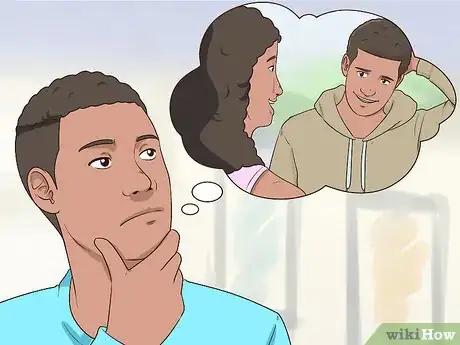

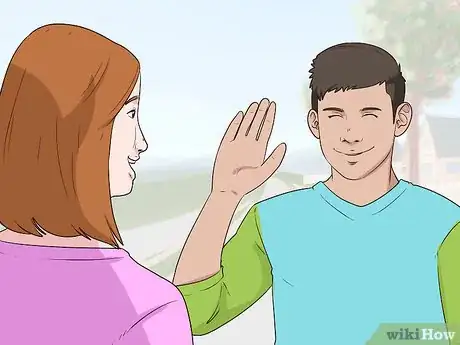
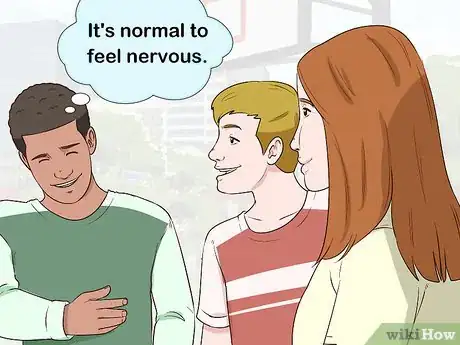
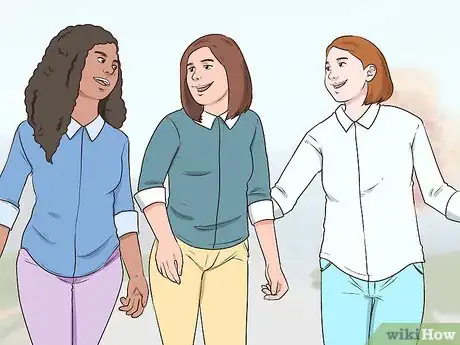

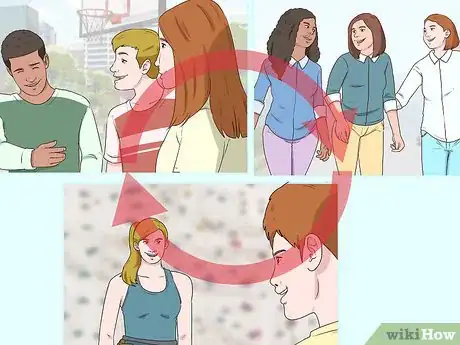

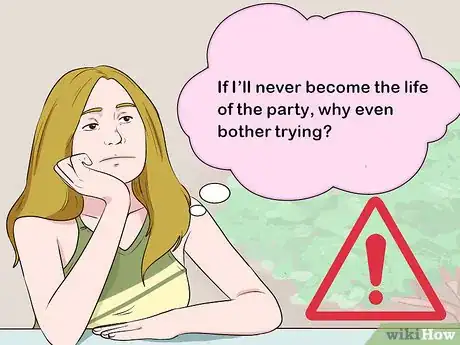
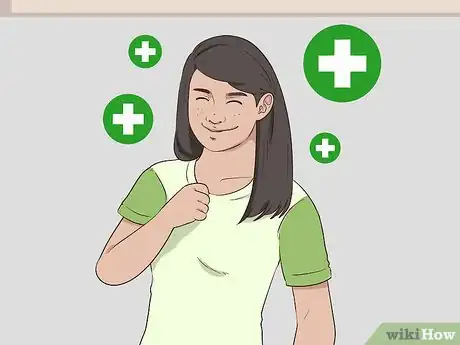

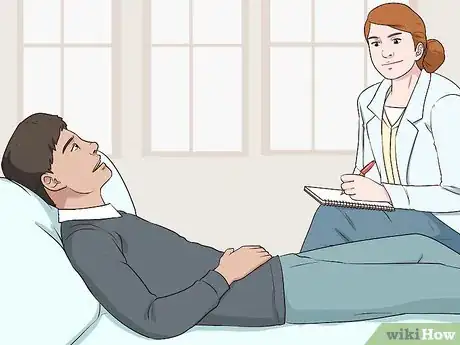


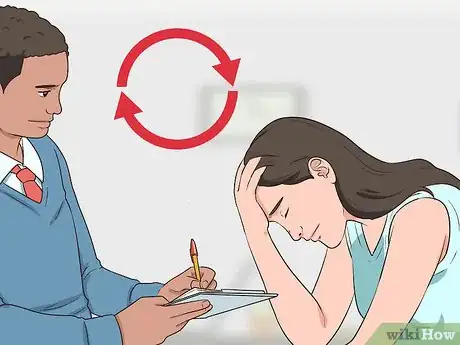
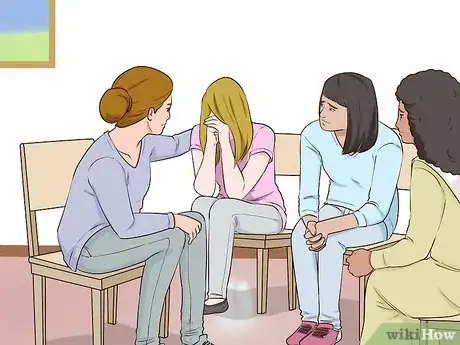





























































Medical Disclaimer
The content of this article is not intended to be a substitute for professional medical advice, examination, diagnosis, or treatment. You should always contact your doctor or other qualified healthcare professional before starting, changing, or stopping any kind of health treatment.
Read More...